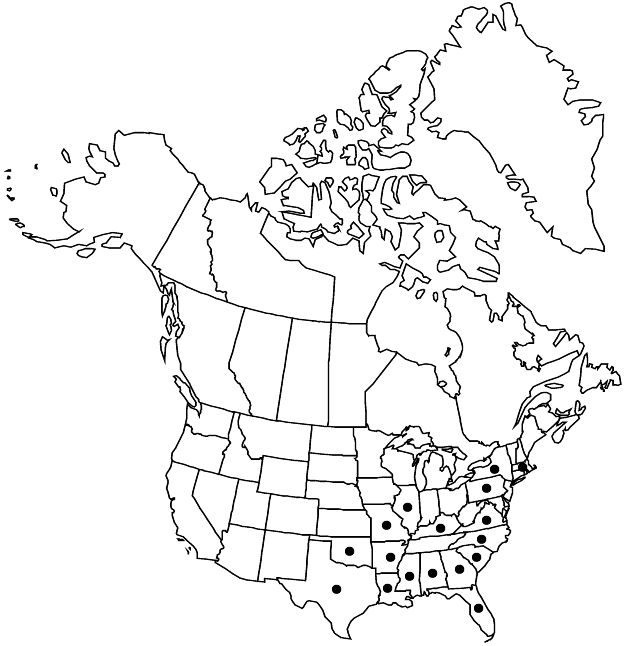Lagenaria siceraria
Publ. Field Mus. Nat. Hist., Bot. Ser. 3: 435. 1930.
Distribution

Ala., Ark., Fla., Ga., Ill., Ky., La., Mass., Miss., Mo., N.C., N.Y., Okla., Pa., S.C., Tex., Va., Asia, Africa, Indian Ocean Islands.
Discussion
Subspecies 2 (1 in the flora).
Lagenaria siceraria is broadly cultivated in Asia and locally in the United States for its young and tender fruits, which are eaten as a vegetable. Shells of the dried fruits are often used as water bottles and for making ladles, bowls, pipes, snuff boxes, floats, and horns and other musical instruments. Plants can be confidently identified by their relatively large, solitary, white flowers and pair of glands at the base of the leaf blade.
Subspecies asiatica (Kobiakova) Heiser is centered in Asia and the Pacific Islands and is morphologically and molecularly distinct from the primarily African subsp. siceraria. The former is characterized by leaves with sharply
pointed triangular lobes and serrate margins, larger staminate flowers, and relatively longer seeds.
A wild population of bottle gourd was recently discovered in Zimbabwe, Africa (D. S. Decker et al. 2004), establishing the region of origin for Lagenaria siceraria. Compared to the modern wild bottle gourds, all of the archeological specimens have a distinctly thickened rind, reflecting a loss of natural seed dispersal ability, a significant marker of domestication.
The earliest archeological evidence for domestication of bottle gourd in Africa is from ca. 4000 bce. The earliest known archeological records from Asia are ca. 8000–9000 bce from China and Japan, and it is probable that initial domestication in Asia (the origin of subsp. asiatica) occurred perhaps as much as 2000–3000 years before that, even by 12,000–13,000 bce.
In the New World, domesticated bottle gourd had a broad distribution by at least 8000 bce (2700–8100 bce in eastern North America, 7200–10,000 bce in southern Mexico, and 8400 bce in Peru). All archeological rind fragments of American bottle gourds from pre-European samples are identical in DNA to Asian plants, rather than African ones, and seed morphology is congruent (D. L. Erikson et al. 2005). It seems clear that Asia was the source of the early introduction to the New World.
If the hypothesized time period for earliest Asian domestication of Lagenaria siceraria is correct, then the bottle gourd along with the dog were domesticated long before other plants and animals. D. L. Erikson et al. (2005) believed that both of these useful species crossed from Asia to North America with Paleoindian populations as they colonized the New World. Archeological records of bottle gourd in North America are of subsp. asiatica.
After multiple arrivals of Europeans in the New World, cultivars of African origin apparently spread rapidly, and, based on DNA analysis of modern New World races, today have almost completely replaced subsp. asiatica in the Western Hemisphere.
Selected References
None.